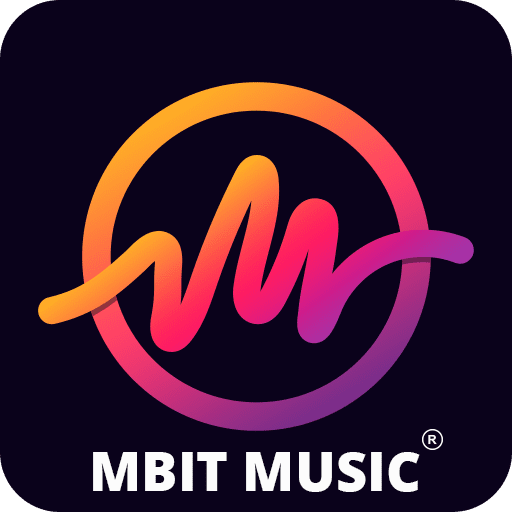סקירה כללית על הפתרון
מהי בדיקת אימוץ של פורמט מודעה?
בין שהאפליקציה שלכם מבוססת על הכנסות משילוב של מקורות הכנסה ובין שהיא מבוססת על הכנסות מפרסום, יכול להיות שיהיה לכם קשה להשתמש בפורמטים שונים של מודעות.
לא כל הפורמטים של המודעות מתאימים לכל אפליקציה, ויכול להיות שפורמטים מסוימים של מודעות יניבו ביצועים טובים יותר בהתאם למאפייני האפליקציה. כשאתם מטמיעים פורמט מודעה חדש, יכול להיות שאתם חוששים מההשפעה השלילית על חוויית המשתמש או על שימור המשתמשים. עם זאת, יכול להיות שאתם גם רוצים לדעת אם תוכלו להגדיל את ההכנסות ואת ההתעניינות של המשתמשים אם תטמיעו פורמט מודעה חדש בצורה נכונה.

כדי לפתור את הבעיות האלה, מערכת Firebase מציעה כלים שיעזרו לכם לבדוק פורמטים חדשים של מודעות, ואז לקבל החלטות מבוססות-נתונים לגבי השימוש בהם:
באמצעות Firebase, אפשר לבצע בדיקת A/B של הביצועים של פורמט מודעה חדש בקרב קבוצת משנה קטנה של משתמשים.
תוכלו לראות את תוצאות הבדיקה ולעיין בהמלצות מ-Firebase לגבי הביצועים של פורמט המודעה החדש לעומת פורמט המודעה הקיים.
אחרי שתהיה לכם תחושה חזקה שלשינוי צפויה השפעה חיובית, תוכלו להשיק אותו למשתמשים נוספים בלחיצה אחת על הלחצן.
התרחיש העסקי והערך
מפתחים ובעלי אפליקציות שמשתמשים בכלים של Google AdMob ו-Firebase כדי להוסיף פורמט מודעה חדש נהנים מעלייה משמעותית בהכנסות (עד פי 10*), תוך שמירה על יציבות בשיעור השימור.
*העלייה בהכנסות מבוססת על תוצאות מ-8 בעלי תוכן דיגיטלי גדולים בשנת 2020.

|
חברת Pomelo Games משתמשת ב-Firebase כדי להגדיל את ההכנסות שלה ב-35% בלי לאבד שחקנים. |

|
Qtonz משתמשים ב-Firebase כדי להשיג עלייה של פי 4 בהכנסות מפרסום ועלייה של 190% בהכנסה היומית הממוצעת לכל משתמש פעיל (ARPDAU). |
הטמעת הפתרון
כדי ליישם את הפתרון הזה, אפשר לפעול לפי המדריך המפורט שלנו (סקירה כללית של המדריך מופיעה בהמשך הדף).
במדריך הזה, שמחולק לכמה שלבים, תלמדו איך משתמשים ב-Firebase כדי לבדוק Google AdMobפורמט מודעה חדש לאפליקציה. בדוגמה לבדיקה נעשה שימוש במודעת מעברון עם פרס, אבל אפשר להסיק מסקנות ולהשתמש באותם השלבים כדי לבדוק פורמטים אחרים של מודעות.
במדריך הזה נניח שכבר השתמשתם ב-AdMob באפליקציה שלכם, ואתם רוצים לבדוק אם הוספת יחידת מודעות נוספת (עם פורמט מודעה חדש) תשפיע על ההכנסות מהאפליקציה או על מדדים אחרים. עם זאת, אם עדיין לא משתמשים ב-AdMob באפליקציה, זה בסדר. בעזרת השלבים במדריך הזה תוכלו גם להבין אם הוספה פשוטה של יחידת מודעות לאפליקציה משפיעה על המדדים של האפליקציה.
המוצרים והתכונות ששימשו לפתרון הזה
|
Google AdMob Google AdMob מאפשר ליצור וריאנטים של יחידות מודעות שיוצגו באפליקציה. כשמקשרים את AdMob ל-AdMob, AdMob שולח ל-Firebase מידע על ההכנסות מפרסום כדי לשפר את האופטימיזציה של אסטרטגיית הפרסום. Google Analytics Google Analytics מספק תובנות לגבי מדדי מעורבות, שימור ומוניטיזציה של משתמשים, כמו ההכנסה הכוללת, ההכנסה מ-AdMob, ההכנסה מרכישות ועוד. אפשר גם ליצור קהלים ופלחים של משתמשים. |
Firebase Remote Config Firebase Remote Config מאפשרת לשנות באופן דינמי ולהתאים אישית את ההתנהגות והמראה של האפליקציה לפלחים הרצויים של המשתמשים – בלי לפרסם גרסה חדשה של האפליקציה. במדריך הזה תלמדו להשתמש בפרמטרים של Remote Config כדי לקבוע אם יחידת מודעות חדשה תוצג למשתמשים. Firebase A/B Testing Firebase A/B Testing מספק את הממשק ואת התשתית להרצת ניסויים שיווקיים ומוצריים באפליקציה. הוא אחראי על הפצת הווריאנטים של הניסוי למשתמשים, ולאחר מכן מבצע ניתוח סטטיסטי כדי לקבוע אם וריאנט של ניסוי מניב ביצועים טובים יותר מקבוצת הבקרה על סמך מדד המפתח שבחרתם, כמו הכנסה או שימור משתמשים. |

סקירה כללית על המדריך לפתרון בעיות
שימוש ב-AdMob כדי ליצור וריאנט חדש של יחידת מודעות לבדיקה
יוצרים יחידה חדשה של מודעות מעברון מתגמלות ב-AdMob.
מטמיעים את מיקום יחידת המודעות בקוד של האפליקציה.
הגדרה של בדיקת A/B במסוף Firebase
מגדירים את היסודות של הבדיקה, את הטירגוט ואת היעדים שהבדיקה תתבצע בהתאם להם.
מגדירים את הווריאנטים של הבדיקה ומגדירים את הפרמטר Remote Config, שקובע אם להציג את יחידת המודעות החדשה למשתמשים בבדיקה.
טיפול בערכי הפרמטר Remote Config בקוד של האפליקציה
משתמשים בפרמטר Remote Config באפליקציה.
מטמיעים את הלוגיקה להצגת יחידת המודעות על סמך הערך של הפרמטר.
מתחילים את בדיקת ה-A/B ובודקים את תוצאות הבדיקה במסוף Firebase
אחרי שמפעילים את הבדיקה ומאפשרים לה לפעול במשך כמה ימים או שבועות, כדאי לבדוק במסוף Firebase אם יש לבדיקה וריאנט מנצח על סמך היעד הראשי של בדיקת ה-A/B.
בודקים את ההשפעה על מדדים משניים של כל וריאנט כדי לוודא שהוריאנטים לא גרמו להשפעות שליליות לא רצויות על המדדים האלה.
החלטה אם להשיק את פורמט המודעה החדש
אם A/B Testing יקבע שהוריאנט שבו מוצג פורמט המודעה החדש הוא הזוכה, תוכלו להתחיל להציג את פורמט המודעה לכל המשתמשים שאליהם הופנה הניסוי, לכל המשתמשים באפליקציה או לקבוצת משנה של המשתמשים.
אם עדיין לא ניתן לקבוע מנצחת ברורה, תוכלו להמשיך להריץ את הניסוי כדי לאסוף עוד נתונים, או לסיים את הניסוי אם הוא כבר פועל במשך תקופה ארוכה עם תוצאות לא חד-משמעיות.

